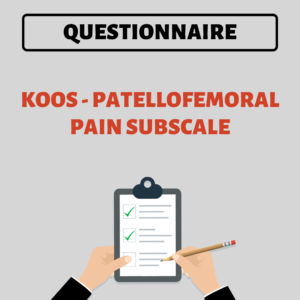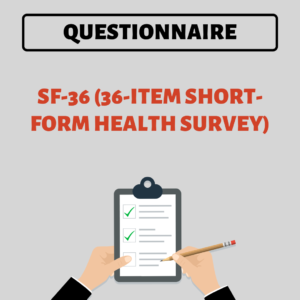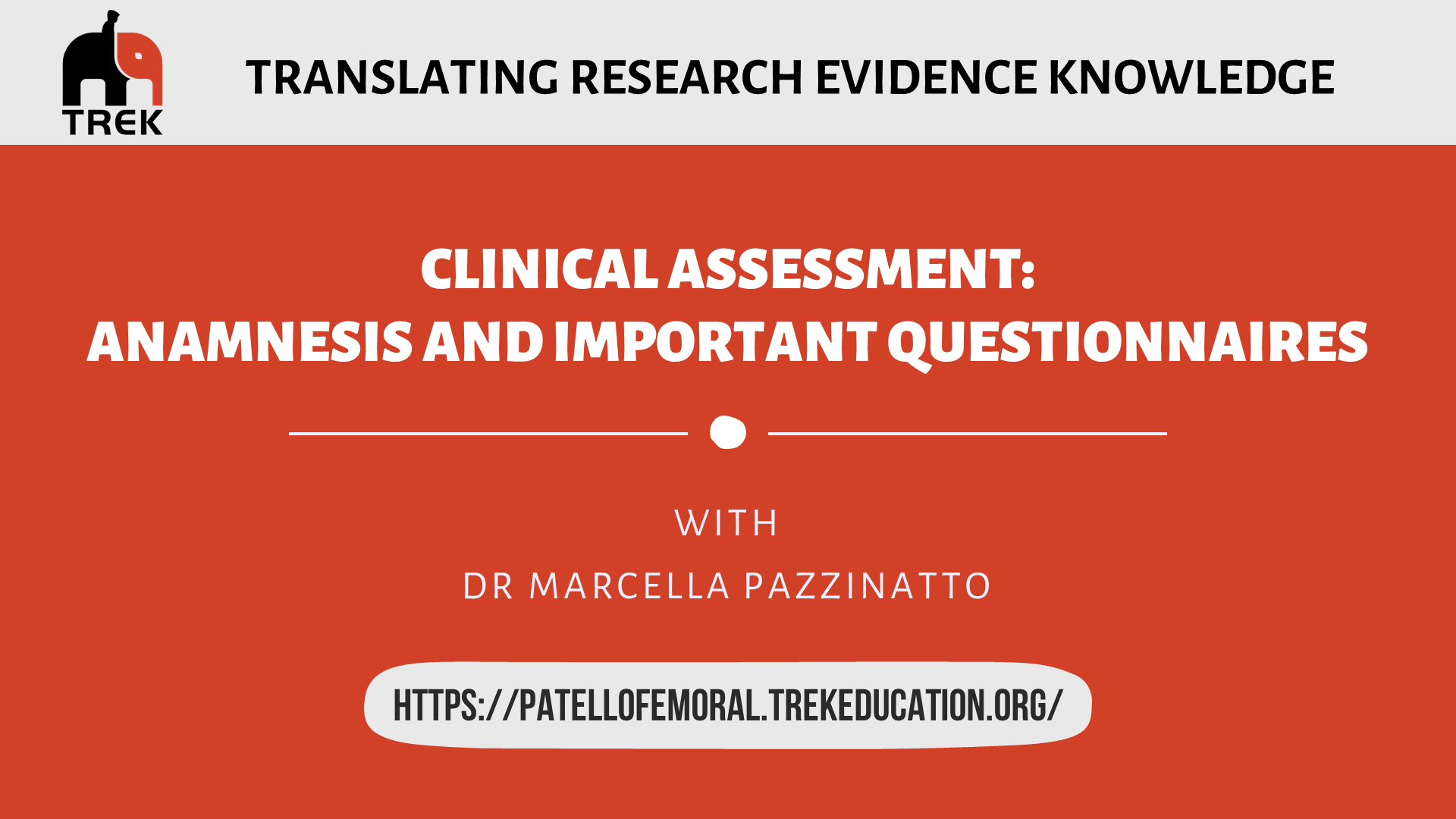In this section, you will find detailed information about the anamnesis of the patient with patellofemoral pain and the recommendations on patient-reported outcome measures that should be used.
Anamnesis
Patellofemoral pain is a condition that has an essentially clinical diagnosis. Therefore, the anamnesis is an essential part of the assessment of a patient with patellofemoral pain.1,2,3 The anamnesis is typically the first contact between the health professional and patient, and from this initial conversation, many relevant information will be collected to guide the diagnosis, assessment and treatment approach.1,2,3
Some items are essential in the anamnesis of patients with patellofemoral pain and are detailed in the infographic below:
PS: Click on the icon (i) represented in the image to find out more information about the topic.
Important questionnaires
There are many patient-reported outcome measures, tipically administered as questionnaires, that are useful to complement the assessment of a patient with patellofemoral pain. These questionnaires are used by are used by researchers and clinicians to follow the course of patellofemoral pain and evaluate treatment outcomes.1,2,3 Furthermore, as they are outcomes reported by the patient, they measure the patient’s own perspective of their condition and treatment, without interpretation of their response by another individual. This minimises observer bias, and captures aspects of patellofemoral pain that are likely to be important to the patient. the patient’s perspective on the their condition and treatment, and, therefore, its use is highly recommended.1,2,3
The presence of pain is the main symptom presented by patients with patellofemoral pain. Therefore, pain assessment is essential. The visual analogue pain scale (VAS) is useful to assess the level of pain in different situations (worst pain in the last week, usual pain level or pain level while performing some functional activity).4
VAS ranges from 0 to 10 (or 0 to 100), with 0 indicating “no pain” and 10 indicating “worst imaginable pain”.
 The AKPS is a 13-item questionnaire with discrete categories related to various levels of current knee function.
The AKPS is a 13-item questionnaire with discrete categories related to various levels of current knee function.
Categories within each item are weighted, and responses are summed to provide an overall index in which 100 represents “no disability” and 0 represents “the worst possible disability”.
Click on the figure to have access to the questionnaire.
.
.
 This is an additional subscale of the KOOS (Knee injury and Osteoarthritis Outcome Score) questionnaire.
This is an additional subscale of the KOOS (Knee injury and Osteoarthritis Outcome Score) questionnaire.
The KOOS-PF is an 11-item questionnaire for pain, stiffness, and quality of life in persons with patellofemoral pain and knee OA.
It is scored out of 100 points, with higher scores meaning less disability.7
Click on the figure to have access to the questionnaire.
.
 The SF-36 is a 36-item questionnaire, comprising 8 subscales: functional capacity, physical aspects, pain, general health, vitality, social aspects, emotional aspects and mental health.
The SF-36 is a 36-item questionnaire, comprising 8 subscales: functional capacity, physical aspects, pain, general health, vitality, social aspects, emotional aspects and mental health.
The total score ranges from 0 to 100, with zero corresponding to the worst general health status and 100 to the best health status.8,9
Click on the figure to have access to the questionnaire.
.
.
Watch the video below with Dr. Marcella Pazzinatto, answering the most common questions about this topic [COMING SOON]:


Now that you have reviewed everything about anamnesis and important questionnaires for patellofemoral pain, test your knowledge by taking the quiz below.
References
- Willy et al. 2019. Patellofemoral Pain Clinical Practice Guidelines Linked to the International Classification of Functioning , Disability and Health From the Academy of Orthopaedic Physical Therapy.
- Barton et al. 2021. REPORT-PFP: A consensus from the International Patellofemoral Research Network to improve REPORTing of quantitative PatelloFemoral Pain studies.
- Crossley et al. 2016. 2016 Patellofemoral pain consensus statement from the 4th International Patellofemoral Pain Research Retreat, Manchester. Part 1: Terminology, definitions, clinical examination, natural history, patellofemoral osteoarthritis and patient-reported outcome measures.
- Crossley et al. 2004. Analysis of outcome measures for persons with patellofemoral pain: which are reliable and valid?
- Kujala et al. 1993. Scoring of patellofemoral disorders.
- da Cunha et al. 2013. Translation, cross-cultural adaptation, and clinimetric testing of instruments used to assess patients with patellofemoral pain syndrome in the Brazilian population.
- Crossley et al. 2018. The patellofemoral pain and osteoarthritis subscale of the KOOS (KOOS-PF): Development and validation using the COSMIN checklist.
- McHorney et al. 1993. The MOS 36-Item Short-Form Health Survey (SF-36): II. Psychometric and clinical tests of validity in measuring physical and mental health constructs.
- Ciconelli et al. 1997. Brazilian-Portuguese version of the SF-36 questionnaire: A reliable and valid quality of life outcome measure.
